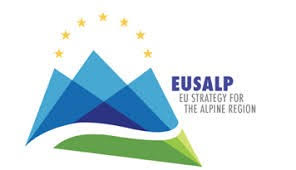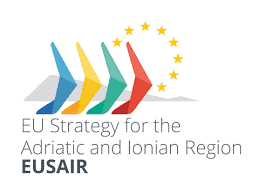EuroAcess Macro-Regions Tool – The database for EU funding opportunities!

EuroAccess is a central online information point on EU funding opportunities in the Macro-Regions. It collects and disseminates data of more than 200 EU funding programs that operate within the geographical scope of the Macro-Regions.
EuroAccess has supported project ideas in the Danube Region since 2016. Due to the success of the pilot initiative, it has now expanded to all four EU Macro-Regions:
| EU Strategy for the Baltic Sea Region | EU Strategy for the Danube Region | EU Strategy for the Alpine Region | EU Strategy for the Adriatic Ionian Region |
 |
 |
 |
 |
| EU Strategy for the Baltic Sea Region |
 |
| EU Strategy for the Danube Region |
 |
| EU Strategy for the Alpine Region |
 |
| EU Strategy for the Adriatic Ionian Region |
 |
EuroAcess Macro-Regions has been initiated by EUSDR Priority Area 10 (Institutional Capacity & Cooperation).
Subscribe now to the EuroAccess newsletter in order to receive latest information on avalaible calls relevant to you!
See below how EUSDR specific calls are presented in EuroAccess newsletters:
EuroAccess Newsletter January 2022
EuroAccess Newsletter December 2021
EuroAccess Newsletter November 2021
EuroAccess Newsletter October 2021
EuroAcess Newsletter August 2021
EuroAcess Newsletter July 2021
EuroAccess Newsletter June 2021
EuroAccess Newsletter April 2021
EuroAccess Newsletter October 2020
EuroAccess Newsletter November 2020
EU Funds & Programmes to consider:
European Structural and Investment funds (ESIF)
Five main funds (ERDF, CF, ESF, EAFRD, EMFF) work together to support economic development across all EU countries, in line with the objectives of the Europe 2020 strategy.
- ERDF focuses its investments on several key priority areas: innovation and research; the digital agenda; support for small and medium-sized enterprises (SMEs); the low-carbon economy. This is known as “thematic concentration”.
http://ec.europa.eu/regional_policy/en/funding/erdf/
- CF is aimed at member states whose GNI per capita is less than 90% of EU average. It aims to reduce economic and social disparities and to promote sustainable development. For 2014-2020 period, the CF concerns Bulgaria, Croatia, Cyprus, the Czech Republic, Estonia, Greece, Hungary, Latvia, Lithuania, Malta, Poland, Portugal, Romania, Slovakia and Slovenia.
http://ec.europa.eu/regional_policy/en/funding/cohesion-fund/
- European Social Fund Plus (ESF+) is the European Union (EU)’s main instrument for investing in people. With a budget of €142.7 billion for the period 2021-2027, the ESF+ will continue to provide an important contribution to the EU’s employment, social, education and skills policies, including structural reforms in these areas.
http://european-social-fund-plus.eu/en
- European Agricultural Fund for Rural Development (EAFRD) finances the EU’s contribution to rural development programmes (RDPs). RDPs consist of measures and projects that contribute to the EU-wide objectives such as improving the competitiveness of agriculture, encouraging sustainable management of natural resources and climate action, achieving a balanced territorial development of rural economies and communities. Programmes are prepared on a national or regional basis, and must work towards specific targets relating to the EU’s rural development objectives.
- European Maritime, Fisheries and Aquaculture Fund (EMFAF) runs from 2021 to 2027 and supports the EU common fisheries policy (CFP), the EU maritime policy and the EU agenda for international ocean governance and provides support for developing innovative projects ensuring that aquatic and maritime resources are used sustainably. The fund helps achieve sustainable fisheries and conserve marine biological resources, ensuring food security through the supply of seafood products, growth of a sustainable blue economy and healthy, safe and sustainably managed seas and oceans.
European Territorial Cooperation (ETC)
ETC, better known as Interreg, is one of the two goals of cohesion policy. It provides a framework for the implementation of joint actions and policy exchanges between national, regional and local actors from different member states. It aims at helping to ensure that borders are not barriers, bringing Europeans closer together, helping to solve common problems, facilitating the sharing of ideas and assets, and encouraging strategic work towards common goals. All this demonstrates its clear European added value. Interreg is built around three strands of cooperation: cross-border (Interreg A), transnational (Interreg B), interregional (Interreg C) and outermost regions’ cooperation (Interreg D).
Horizon Europe, the successor of Horizon 2020, is the EU’s key funding programme for research and innovation. The programme tackles climate change, helps to achieve the UN’s Sustainable Development Goals and boosts the EU’s competitiveness and growth.
For funding opportunities under Horizon Europe please consult:
https://commission.europa.eu/funding-tenders/find-funding/eu-funding-programmes/horizon-europe_en
COSME focuses its financing on projects strengthening the competitiveness and sustainability of the Union’s enterprises, particularly SMEs. The Programme aims to reduce the administrative and regulatory burden on SMEs by creating a business-friendly environment. It also supports businesses to be competitive by encouraging them to adopt new business models and innovative practices. This complements actions in areas with high growth potential such as the tourism sector.
Please note that the funding for the COSME programme came from the EU 2014-2020 budget and the programme will not receive additional EU funding. There are still some ongoing projects for objectives 2, 3 and 4 (access to markets, competitiveness and entrepreneurship). The funding for these multiannual projects came from EU 2019-2020 budget. Some financial intermediaries (e.g. banks, equity funds, etc.) for the COSME financial instruments are still active until 2034 and SMEs can apply for COSME financing alongside other financing opportunities, including from the InvestEU Fund, via the access to finance website.
For funding opportunities under COSME please consult:
EU Programme for education, youth and sport (Erasmus+)
Erasmus+ is the EU’s programme to support education, training, youth and sport in Europe. It has an estimated budget of €26.2 billion, nearly double the funding compared to its predecessor programme (2014-2020). The 2021-2027 programme places a strong focus on social inclusion, the green and digital transitions, and promoting young people’s participation in democratic life and supports priorities and activities set out in the European Education Area, Digital Education Action Plan and the European Skills Agenda. The programme also supports the European Pillar of Social Rights, implements the EU Youth Strategy 2019-2027 and develops the European dimension in sport.
For funding opportunities under Erasmus+ please consult:
Creative Europe Programme (CulturEU)
The Creative Europe programme 2021-2027 has a budget of € 2.44 billion, compared to €1.47 billion of the previous programme (2014-2020). Creative Europe invests in actions that reinforce cultural diversity and respond to the needs and challenges of the cultural and creative sectors. The main objectives of the programme are to safeguard, develop and promote European cultural and linguistic diversity and heritage and to increase the competitiveness and economic potential of the cultural and creative sectors, in particular the audiovisual sector.
The Creative Europe programme is divided in 3 strands: culture, media and cross-sectoral.
For funding opportunities under Creative Europe please consult:
Connecting Europe Facility (CEF)
The Connecting Europe Facility (CEF) is a key EU funding instrument in delivering the European Green Deal and an important enabler towards the Union’s decarbonisation objectives for 2030 and 2050. It supports the development of high performing, sustainable and efficiently interconnected trans-European networks in the fields of transport, energy and digital services. CEF investments fill the missing links in Europe’s energy, transport and digital backbone. The CEF Programme is divided into three sectors:
For funding opportunities under CEF please consult: https://cinea.ec.europa.eu/programmes/connecting-europe-facility/about-connecting-europe-facility_en
Investment EU provides the European Union with crucial long-term funding by leveraging private and public funds in support of Europe’s sustainable recovery. It helps to mobilize private investments for the EU’s top policy priorities, such as the green, and digital transition, innovation and social investments and skills. The InvestEU programme consists of three components: the InvestEU Fund, the InvestEU Advisory Hub and the InvestEU Portal.
If you are looking for finance please consult: https://investeu.europa.eu/investeu-programme_en
The Marguerite Fund – 2020 European Fund for Energy, Climate Change and Infrastructure
Marguerite is an independent European fund investing in infrastructure i.e. greenfield: new projects and facilities, with typical development risks largely mitigated and brownfield: replacement, modernisation and capacity enhancement of existing assets. Established with the backing of six major European financial institutions (namely the EIB, Caisse des Dépôts et Consignations, Cassa Depositi e Prestiti, Instituto de Crédito Oficial, PKO Bank Polski SA, KfW), Marguerite targets long term institutional investors to finance projects aimed at achieving major objectives and strategic projects of the European Union in the areas of transport, energy and climate, as well as energy renewable. For funding opportunities under Marguerite please consult: http://www.marguerite.com/
LIFE PROGRAMME
The EU’s funding programme for the environment and climate action for the period 2014-2020 contributes to sustainable development and to the achievement of the objectives of the Europe 2020 Strategy, the 7th Union Environmental Action Programme and other relevant EU environment and climate strategies and co-finances projects with European added value by means of €3.4 billion. The European Commission (DG Environment and DG Climate Action) manages the LIFE programme. The Commission has delegated the implementation of many components of the LIFE programme to the Executive Agency for Small and Medium-sized Enterprises (EASME). External selection, monitoring and communication teams provide assistance to the Commission and EASME. The European Investment Bank manages the two new financial instruments: Natural Capital Financing Facility (NCFF) and the Private Finance for Energy Efficiency instruments (PF4EE).
For funding opportunities under LIFE please consult:
http://ec.europa.eu/environment/life/funding/financial_instruments/index.htm
Instrument for Pre-Accession Assistance (IPA)
The Instrument for Pre-accession Assistance (IPA) is the means by which the EU has been supporting reforms in the enlargement region with financial and technical assistance since 2007. IPA funds build up the capacities of the beneficiaries throughout the accession process, resulting in progressive, positive developments in the region. For the period 2007-2013, the Instrument for Pre-accession Assistance (IPA) had a budget of €11.5 billion. Its successor, IPA II, was allocated €12.8 billion for the period 2014-2020. For the multiannual financial framework period 2021-2027, the IPA III budgetary envelope is €14.162 billion.

